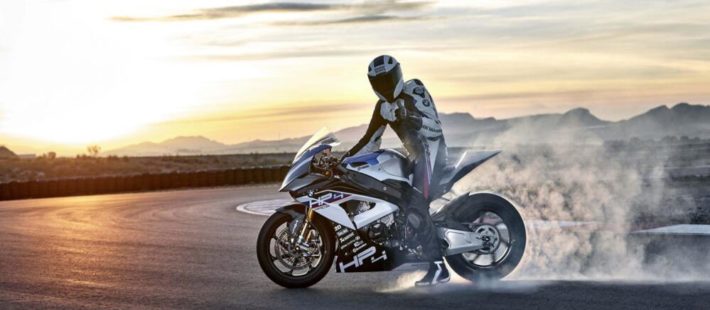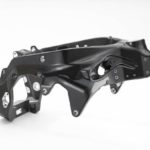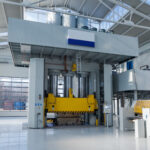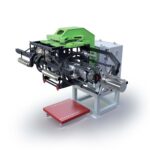The chassis patented by BMW is similar to that of the supersport S1000RR. The innovation lies in the composition of composite panels from different materials (carbon fiber, aramid and synthetic composite) that are screwed to the structure to change the resistance.
If we are able to modify the torsional and bending resistances of a chassis, we can also add parameters useful for the cycling tuning. Depending on the tires used and the type of circuit, it is ideal to have different flexibility of the chassis structure depending on the need.
In many sports frames, it is possible to intervene on some measures through adjustments or the replacement of some parts. For example the:
- adjustment of the inclination of the steering rod
- height of the pivot of the swingarm
- geometries of the rear suspension and the front axle
However, in order to operate on the resistances of the frame or swingarm, it is necessary to act in a more radical and often not functional way. In the highest competitions, it is normal to notice carbon fiber or aluminum sheet reinforcement handkerchiefs that can be added or removed, but these are generally glued or welded.
There are studies that go much further, but these are studies far from having found a practical application.
BMW has filed a patent that tries to solve the problem more easily
The main goal is to use a traditional frame built of sheet metal and other aluminum alloy parts, a chassis with a low weight to which to add some reinforcements according to the need. It is a complex and expensive technology that offers a certain basic versatility. In this case, it has taken as a model a chassis very similar to that of the S1000RR.
These reinforcements are screwed. In this way they can ben :
- assembled or replaced quickly
- sized differently
- built with different materials
BMW mentions carbon fiber, but the composites can also be aramid-based, ceramic, polyamide and more.
About the patent
The patent concerns reinforcements in the attachment area of the rear auxiliary frame. In this case, the advantage would be in having a single structure that can be adapted to different types of motion.
The same concept is also applicable for the
steering tube, for the
attacks of the engine, or the fulcrum of the
swingarm.
















